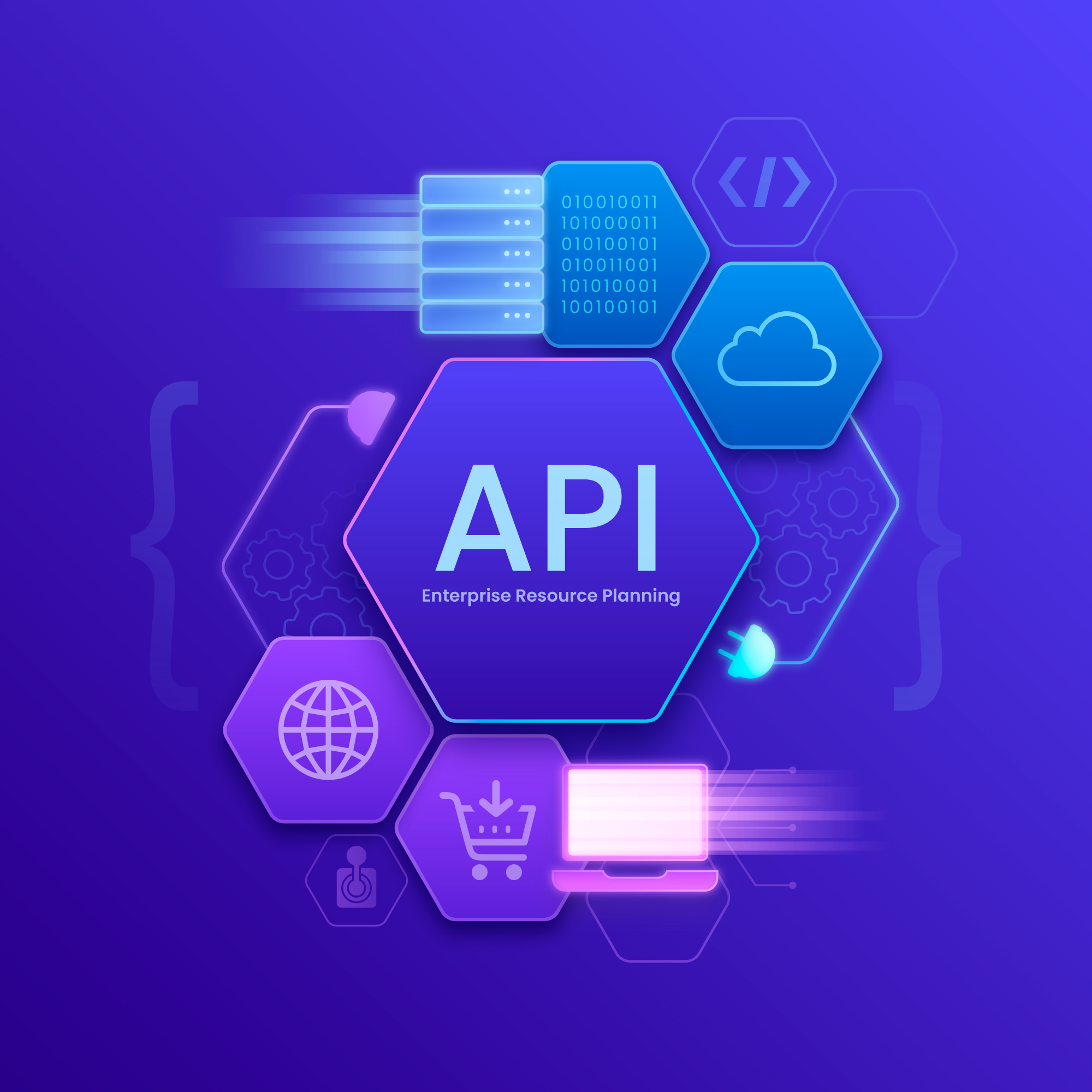
What Are Infor BODs and How Do They Power Integration in ION?
Did you know that 70% of enterprises struggle with data silos, costing them millions in inefficiencies? In today’s fast-paced business world, seamless integration between systems like ERP, CRM, and supply chain platforms is no longer optional—it’s essential. Enter Infor’s Business Object Documents (BODs) and Intelligent Open Network (ION), the dynamic duo that transforms disjointed systems into a unified, efficient network. BODs act as standardized messages, while ION serves as the middleware backbone, ensuring real-time data flow across your enterprise. This guide demystifies Infor BODs, explains their role in ION, and shows how they drive business success. At Sama Integrations, we specialize in unlocking this potential with tailored enterprise solutions.
Whether you’re a business leader aiming to streamline operations, an IT manager tackling integration challenges, or a developer building custom workflows, this article offers a clear, technical, yet approachable exploration of BODs and ION. By the end, you’ll understand how these tools empower your organization and how our services can help you implement them effectively.
What Are Infor BODs?
Business Object Documents (BODs) are the standardized messages that power data exchange in Infor’s ecosystem. Built on the Open Applications Group Integration Specification (OAGIS), BODs are XML-based documents designed to ensure interoperability between Infor and third-party applications. Think of them as universal translators that allow systems to communicate seamlessly, regardless of their underlying technology.
BOD Structure: Verb + Noun
Each BOD combines a verb (the action) and a noun (the data). For example:
- SyncSalesOrder: Updates sales order data across systems.
- ProcessSupplierPartyMaster: Creates or modifies supplier records.
- ConfirmPurchaseOrder: Confirms a purchase order’s status.
This structure ensures clarity. The verb specifies what to do (e.g., Sync, Process, Acknowledge), while the noun defines what data is involved (e.g., SalesOrder, PurchaseOrder). According to Infor documentation, BODs follow a consistent format, making them predictable and reusable.
Key Components of a BOD
A BOD’s XML structure includes:
- Application Area: Metadata about the sender, tenant, and message context.
- Data Area: The core business data, such as order details or customer information.
- UserArea: Custom fields for business-specific data, like a unique discount code.
- Document ID: A unique identifier for tracking, often the order or transaction number.
- Party ID/Location ID: Identifies entities (e.g., customers, suppliers) or sites (e.g., warehouses).
- Date/Time: Standardized in UTC (e.g., 2025-08-28T21:47Z) for global consistency.
These components ensure BODs are flexible yet structured, supporting complex integrations without custom coding. For businesses needing tailored BODs, custom development services can create solutions for unique requirements.
Why BODs Matter
BODs eliminate the need for bespoke integrations by providing a common language. They reduce errors, speed up data exchange, and ensure compatibility across systems. A 2024 Informatica report notes that standardized middleware like BODs cuts data errors by 85%. This makes BODs essential for enterprises aiming to streamline operations and stay competitive.
Ready to Unlock the Power of Infor BODs and ION?
Seamless integration with Infor BODs and ION eliminates data silos and boosts efficiency across your enterprise. At Sama Integrations, we specialize in crafting robust solutions to connect your systems. Reach out to start transforming your business today.
Understanding Infor ION: The Integration Backbone
Infor ION (Intelligent Open Network) is a cloud-native middleware platform, or Integration Platform as a Service (iPaaS), designed to connect Infor and third-party applications. Whether your systems are on-premises, in the cloud, or hybrid, ION acts as a central hub, orchestrating data flows and automating processes. Since its launch, ION has been adopted by over 900 customers worldwide, making it a leading solution for enterprise integration.
Key Features of ION
ION stands out for its:
- Lightweight Architecture: Unlike traditional middleware, ION uses a loosely coupled, publish-and-subscribe model, reducing complexity.
- Real-Time Data Exchange: Ensures instant updates across systems, critical for dynamic industries like manufacturing.
- Workflow Automation: Simplifies processes like approvals or alerts without IT intervention.
- Scalability: Hosted on AWS, ION supports global enterprises with high availability.
For example, ION can connect an Infor ERP like CloudSuite Industrial with a third-party CRM like Salesforce, ensuring real-time data sync. Need help setting up ION? Our consulting services provide expert guidance to optimize your integration strategy.
Why ION Is Essential
ION eliminates data silos by creating a unified platform for all your applications. Its open architecture supports both Infor and non-Infor systems, making it ideal for diverse IT environments. A 2023 Qlik study found that real-time dashboards in platforms like ION cut decision-making time by 45%. ION’s flexibility ensures your business can adapt to changing market demands without overhauling existing systems.
How BODs Power Integration in ION
BODs are the lifeblood of ION, enabling standardized communication across applications. They act as the “language” that systems use to share data, ensuring consistency and reliability. Here’s how they work within ION’s framework.
The BOD Flow in ION
The integration process begins when an application generates a BOD, typically through Infor Process Automation. For example:
- A user creates a sales order in an ERP system.
- The ERP triggers a SyncSalesOrder BOD, which is sent to the ION Outbox.
- ION routes the BOD to the target application (e.g., a CRM) via predefined document flows.
- The CRM processes the BOD, updating its records in real-time.
This flow relies on connection points in ION Desk, which define how applications send and receive BODs. Document flows, configured via ION’s Modeler, specify the routing logic.
Technical Details of BODs
BODs are XML documents with a hierarchical structure. Here’s a simplified example of a SyncSalesOrder BOD:
<SyncSalesOrder>
<ApplicationArea>
<Sender>
<TenantID>ABC123</TenantID>
</Sender>
<CreationDateTime>2025-08-28T21:47Z</CreationDateTime>
</ApplicationArea>
<DataArea>
<SalesOrder>
<DocumentID>SO12345</DocumentID>
<CustomerParty>
<PartyID>CUST001</PartyID>
</CustomerParty>
<TotalAmount unitCode=”USD”>1000.00</TotalAmount>
</SalesOrder>
</DataArea>
<UserArea>
<Property>
<NameValue name=”DiscountCode” type=”StringType”>SUMMER25</NameValue>
</Property>
</UserArea>
</SyncSalesOrder>
- Hierarchical Elements: Tags like <SalesOrder> and <CustomerParty> organize data logically.
- Attributes: Define metadata, like unitCode for currency.
- UserArea: Allows custom fields, such as a discount code, without altering the standard structure.
ION’s publish-and-subscribe model ensures resilience. If a system is offline, ION queues the BOD and delivers it when the system is back online, preventing data loss. For businesses needing custom BODs, our custom development services can tailor solutions to your needs.
Hypothetical Example: Syncing Sales Orders
Imagine a retail company using Infor CloudSuite and Salesforce. When a customer places an order, the ERP generates a SyncSalesOrder BOD. ION routes it to Salesforce, updating the customer’s record instantly. This ensures sales teams have real-time order data, improving customer service. A 2024 McKinsey report notes that real-time order tracking boosts customer retention by 15%.
Ready to Unlock the Power of Infor BODs and ION?
Seamless integration with Infor BODs and ION eliminates data silos and boosts efficiency across your enterprise. At Sama Integrations, we specialize in crafting robust solutions to connect your systems. Reach out to start transforming your business today.
Benefits of Using BODs in ION
BODs and ION together deliver transformative benefits for enterprises, making integration faster, simpler, and more reliable.
Key Benefits
- Interoperability: BODs’ OAGIS-based structure ensures compatibility across systems, reducing custom coding.
- Scalability: ION’s cloud-native design supports growing data volumes, with Gartner predicting cloud spending will hit $482 billion by 2022.
- Real-Time Data: Enables instant updates, critical for industries like retail or manufacturing.
- Reduced Complexity: Standardized BODs simplify integration compared to point-to-point solutions.
- Cost Savings: A 2024 Informatica report found middleware-driven integrations cut deployment time by 30%.
Case Study: Retail Inventory Sync
A mid-sized retailer struggled with inventory discrepancies between its warehouse system and e-commerce platform. By implementing ION with SyncItem BODs, the company achieved real-time inventory updates, reducing stockouts by 20%. ION’s workflow automation also alerted managers to low stock levels, streamlining reordering. Our managed integration services ensure such solutions run smoothly, minimizing downtime.
Enhanced Decision-Making
BODs provide a unified data view, enabling real-time dashboards. For example, a manufacturing firm used ION to integrate production and financial systems, cutting reporting time by 40%. This empowers leaders to make data-driven decisions quickly, boosting competitiveness.
Challenges and Solutions in BOD/ION Integration
While BODs and ION are powerful, integration isn’t without challenges. Here’s how to address common issues.
Common Challenges
- Complex Data Mappings: Different systems use varied field formats (e.g., phone numbers as “(555) 123-4567” vs. “5551234567”).
- Error Handling: Network issues or invalid data can disrupt BOD processing.
- Performance Bottlenecks: High data volumes may slow down integrations.
Solutions
- Data Transformation Tools: ION’s mapping tools standardize formats automatically, reducing manual effort.
- ConfirmBOD: If a BOD fails, ION generates a ConfirmBOD for resubmission after issue resolution.
- ION Desk Monitoring: Provides a graphical view of BOD flows, helping identify and fix errors quickly.
- Expert Support: Professional services can optimize performance and troubleshoot issues. Our support and troubleshooting services ensure seamless integrations.
For example, a healthcare provider faced mapping issues between its ERP and billing systems. By leveraging ION’s transformation tools and our support, they reduced errors by 90%, ensuring accurate billing.
Real-World Applications and Use Cases
BODs and ION shine across industries, enabling tailored integrations for unique needs.
Manufacturing: Supplier Data Sync
A manufacturer used ProcessSupplierPartyMaster BODs to sync supplier data between Infor LN and a third-party procurement system. This ensured accurate supplier records, reducing procurement delays by 25%. Our consulting services helped design the document flows, ensuring seamless integration.
Retail: Order-to-Cash Automation
A retailer implemented SyncSalesOrder and ProcessInvoice BODs to automate its order-to-cash process. ION connected the ERP, e-commerce platform, and payment gateway, improving throughput by 25%. This automation freed up staff for strategic tasks.
Healthcare: Patient Record Integration
A hospital used ION to integrate its EHR system with a billing platform via SyncPatient BODs. Real-time updates ensured accurate billing, improving compliance with regulations like HIPAA. Our custom development services created custom BODs for unique patient data fields.
These examples show how BODs and ION adapt to diverse industries, delivering measurable results. For tailored solutions, explore our consulting services.
Ready to Unlock the Power of Infor BODs and ION?
Seamless integration with Infor BODs and ION eliminates data silos and boosts efficiency across your enterprise. At Sama Integrations, we specialize in crafting robust solutions to connect your systems. Reach out to start transforming your business today.
Future of BODs and ION in Enterprise Integration
The demand for real-time, cloud-based integration is growing. Gartner predicts that by 2026, cloud spending will account for 45% of enterprise IT budgets. ION’s cloud-native design positions it as a future-proof solution, supporting emerging trends like:
- API Gateway: Enhances connectivity with RESTful APIs and OData for modern applications.
- Hybrid Integrations: Bridges on-premises and cloud systems seamlessly.
- AI-Driven Automation: ION’s workflow tools are evolving to predict issues and recommend actions.
BODs will remain critical, offering a standardized framework as businesses adopt more cloud and IoT solutions. For cutting-edge integration strategies, visit Sama Integrations.
Conclusion and Call-to-Action
Infor BODs are the standardized messages that power seamless integration in ION, enabling real-time data exchange, scalability, and efficiency. From syncing sales orders to automating workflows, BODs and ION eliminate data silos and drive business success. Whether you’re in manufacturing, retail, or healthcare, these tools transform your enterprise into a connected, agile network.
Ready to streamline your enterprise integration with Infor ION? Sama Integrations offers expert consulting, custom development, managed integration, and support and troubleshooting to optimize your ION implementation. Contact us today to transform your business with seamless connectivity.




